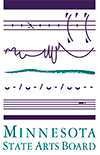
Photo from unsplash.com
I worked a 15-hour day at the MN primary August 9. It was lots of fun, even though I was exhausted the next day. Voters were funny… “I’ll be back this afternoon to vote again!” Or “Here’s $20. I need a fishing license.”
What wasn’t funny, however, were the handful of elderly women upset because we didn’t ask them to show an ID. “What’s to stop someone from voting in my place?” We aren’t allowed to discuss politics at the poll, which is a good thing, and because you can’t answer their questions without touching on politics, we didn’t have a good answer for them. But now that I’m not constrained by election day rules, I’ll give it a try…
Let’s call our elderly voter Joan. Here’s why no one is likely to impersonate her:
—The person will need Joan’s birth date, address, and phone number. If Joan is 78, the woman trying to impersonate her must appear 78. She must also be able to forge Joan’s signature.
–This 78-year-old woman must be willing to break the law. That’s because getting caught impersonating a voter means 5 years in prison and a $10,000 fine. Is a single stolen vote really worth that? Not likely.
To make any impact on the election results, this impersonator must vote over and over and over again, using a different name, birth date, address, and phone number each time. She must vote each time in a different precinct, since voters sign in before voting and aren’t allowed to sign in a second time! So let’s imagine an energetic 78-year-old woman determined to steal as many votes as she can. She starts at 7 am and moves from precinct to precinct, armed with a stolen identity for each location (How she’d get this information? Let’s assume she’s hacked into a voter registration data base, which is highly protected with lots of cybersecurity. If the datebase is compromised, the county will know it.) She could make it to, what, maybe 10 precincts? That’s 50 years in prison and a $100,000 fine. What if she successfully voted in 20 precincts? That’s 100 years in prison and $200,000 fine. All for twenty votes, which won’t swing an election.
Is there a polite way to tell Joan that her vote just isn’t worth stealing?
In a study of over 1 billion votes cast between 2000 and 2014, there were 31 cases of voter impersonation. According to the Brennan Center, your chances of getting hit by lightning are greater than someone trying to impersonate you at the polls.
On the other hand, requiring state-issued voter ID cards definitely interferes with many citizens’ ability to vote: the elderly, poor, people with transportation issues, those with job inflexibility unable to travel great distances (required in many cases in order to get an ID.) Just because it’s easy for white, middle-class voters, most of whom have driver’s licenses, doesn’t mean it’s easy for everyone.
35 states have decided it’s more important to protect Joan from lightning than to make it easier for thousands of others to vote.
The case for and against Voter ID laws has many sides. Here’s a website that tries to present both sides:
https://ballotpedia.org/Arguments_for_and_against_voter_identification_laws


One Response
Yep, saying ‘voter fraud’ is just a way to stop the “wrong” people from voting, ie non-GOP.